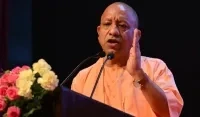Uttar Pradesh Chief Minister Yogi Adityanath has announced the launch of the ‘Gomti Revival Mission’, marking a significant step towards realizing the vision of a clean, uninterrupted, and revitalized Gomti River.
Emphasizing the river’s cultural and environmental importance, the Chief Minister stated that the Gomti, which flows from Pilibhit to Ghazipur, is not just a water body but a symbol of cultural consciousness, spiritual heritage, and a vital lifeline for millions.
He stressed that the mission aims not only at purifying the river’s waters but also at reviving the environment and cultural ethos surrounding the river. The initiative will serve as a beacon of environmental responsibility and intergenerational commitment.
The meeting, supported by the Territorial Army, was attended by Major General Salil Seth, Brigadier Navtej Singh Sohal, Brigadier C Madhwal, Colonel Arvind S Prasad, Lieutenant Colonel Sachin Rana, Lieutenant Colonel Saurabh Mehrotra, Major KS Negi, Professor (Dr) Venkatesh Dutta, and Lieutenant Colonel Hem Lohumi (Retd.), along with senior government officials.
During the deliberations, the Chief Minister reviewed the mission’s detailed action plan and issued directives for its effective implementation. He emphasized that the initiative should not remain an administrative exercise but must evolve into a mass movement engaging every section of society.
Chief Minister Yogi Adityanath directed officials to identify and take strict action against illegal encroachments along the Gomti River, ensuring cleanliness and safety on its banks. He underscored that the mission will cover the entire river basin from Pilibhit to Ghazipur, aiming to restore the river to its clean, uninterrupted, and pristine form.
Under the mission, the Chief Minister set ambitious targets to intercept over 95 percent of urban sewage, reduce pollution levels, and revive the river’s ecosystem. It was reported that 13 out of 39 major drains flowing into the Gomti remain untreated.
Currently, six Sewage Treatment Plants (STPs) are operational with a combined capacity of 605 MLD. To improve their efficiency, it is necessary to divert more drains to STPs, build new plants, and upgrade existing ones.
The Chief Minister emphasized that the mission’s goal goes beyond pollution control. It is a comprehensive effort to biologically, culturally, and aesthetically restore the river. As part of the action plan, new wetlands, including Ekana Wetland and Sajan Lake, will be developed in Lucknow.
Campaigns will be launched to remove illegal encroachments, beautify river ghats, and expand green cover along the riverbanks. The Chief Minister also called for strict enforcement of the ban on single-use plastics, which contribute significantly to sewer blockages and water pollution.
The Gomti Task Force, created earlier this year under the National Mission for Clean Ganga (NMCG), comprises the Project Director of the State Clean Ganga Mission, along with representatives from the Irrigation Department, Pollution Control Board, Jal Nigam, Lucknow Municipal Corporation, and the Lucknow Development Authority, among others.
The task force has mobilized over 70,000 citizens through foot and boat patrols, removed more than 1,000 tons of water hyacinth, surveyed drains to identify pollution sources, and conducted over 100 awareness campaigns.
Through the ‘River Yoga Campaign’ (April 21 to June 21, 2025), daily yoga sessions, ghat clean-up drives, and public engagement activities were organized at five major ghats, with participation from more than 50,000 citizens and the removal of 300 tons of water hyacinth.
Reaffirming his commitment, the Chief Minister stated, “The waters of the Gomti are the lifeblood of the region, and it is Uttar Pradesh’s moral and cultural duty to preserve its purity and continuity.” He directed officials to hold monthly review meetings of the Task Force, submit quarterly progress reports to the Chief Minister’s Office, and ensure transparency and public participation at every level.
The Chief Minister assured that adequate resources would be allocated for the mission, ruling out shortages of essential equipment such as track boats, floating barriers, and excavators. He emphasized that the mission would not remain a government initiative alone but would transform into a collective journey driven by public participation.
To this end, widespread awareness campaigns will be organized under the guidance of public representatives and with the active involvement of educational and social institutions, turning the mission into a true mass movement. The Chief Minister concluded by emphasizing that the Gomti River can regain its natural purity and life-giving flow only through the combined efforts of society and government.
